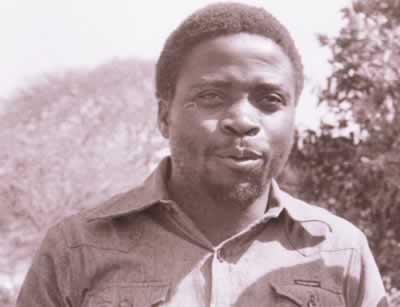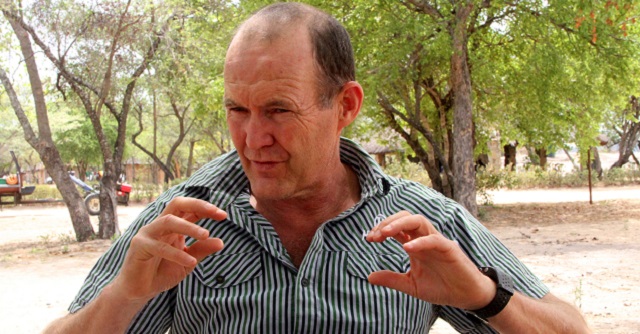
The Sunday News

Brigadier General Abel Mazinyane (Retired)
Continued from Last Week
ZPRA Structural
AT its inauguration (1971) ZPRA had a simple structure, Chief of Staff, Commissar, Chief of Military, Intelligence, Chief of Operations, Chief of Logistics and Chief of Administration, Training and Recruitment. Under Military Intelligence were reconnaissance and communication. Logistics had under it, medicine and transport.
The high command under Rogers “Alfred Nikita” Mangena immediately adjusted to operational demands re-arranging departmental responsibilities. Military intelligence lost communication to a re-defined chief of staff and Reconnaissance to Operations department.
When ZPRA returned from ZIPA in (in which Mangena was commissar who was on par with the commander) Mozambique, Mangena suggested some changes in the High Command that were approved by members of the Party National Executive. The changes were the promotion of the Chief of Staff to commander of the army, introduction of a chief of staff who was second in command and deputies for military intelligence, operations and logistics.
It had been considered before that military intelligence should control all information gathering so that it puts together all the bits and pieces of data collected by intelligence, reconnaissance and communications, evaluate and distribute. However, operational conditions demanded a revisit of the organisation and to make adjustments.
Before reconnaissance groups were not allowed to engage in a fire fight with the enemy except in self defence. It happened that one of the reconnaissance groups stumbled on Rhodesian troops taking a swim at a river while guarded by three district assistants (DAs). The group that had comrade Sibatayi silently disarmed the DAs. They gagged and gave them a thorough beating. The 303 rifles were rendered unusable. The guards were left to go and report back to the Rhodesians. I later met one of the guards in Zambia. The encounter had persuaded him to join the armed struggle. Salvation comes in different ways.
This incident and others sparked a debate that lead to reconnaissance being moved to operations department. After all, because of the small number of guerrillas ZPRA had at the time, everyone was involved in operations.
Reconnaissance, communication, transport, engineers were established as full departments in 1978.
Mangena survived other attacks before his death caused by a landmine. One was when his vehicle was attacked as it approached the entrance to Freedom Camp. He lost a finger during that attack. The other was when his room at Zimbabwe House was hit by a RPG-7 (Bazooka) shell a day or two after ZPRA headquarters moved from Zimbabwe House to Freedom Camp. The only casualty of the attack was comrade Masala who had remained behind to arrange logistical support for the new headquarters.
He had moved to a room that had been used by Mangena before he moved to Freedom Camp. Poor Masala, maybe he took, “pabve gondo pagara zizi” too far. Just a thought. The shell had been fired through the window. It exploded on the concrete ceiling. Masala was thrown off the bed with a shell splinter on his foot, splitting headache and blown ear drums.
When Nikita took over the command of ZPRA a strict code of discipline was also published in the Disciplinary Code. A code of discipline that clearly spelt out the do’s and don’ts was introduced in 1971 at Mboroma camp. Mboroma camp was established by Zambian authorities during the period of Zapu political crisis that gave birth to Frolizi (Front For the Liberation of Zimbabwe led by James Chikerema) in 1970. Those who remained Zapu after the crisis sat to produce a document called the “Prox document”.
It is part of this document that produced the “disciplinary code”. It also introduced the taking of an oath as an initiation into ZPRA. This was done after completion of military training. The disciplinary code went a long way to enforce and maintain discipline in the ZPRA ranks. The strict discipline within ZPRA ranks helped to keep its casualties low. The disciplinary code was a long detailed document that laid down rules of conduct for all who were involved in the struggle. Extracted from the disciplinary code are some of the ZPRA operational standing orders.
For instance in a ZPRA front base along the Zambezi, guerrillas were allowed to hunt to supplement their rations. In the early days of ZPRA (1971 to 1972) the ZPRA high command made sure that ammunition was always supplied but not food. There was no food to supply. The party was broke and international support was just a trickle.
A complaint about this invited sarcastic advice that guerrillas should try roasting bullets, we had no food in our stores. The advice was offered by chiefs of logistics and operations, they were just being sarcastic.
All hunting had to be done not less than five kilometres from any base and more from the Rhodesian border on the Zambian side. Entering of any base at any time was by an agreed signal. Signals were of local birds or local animal sounds. Sleeping was in most cases on a high ground.
Our vehicles driving along Zambezi at night had all lights switched off and brake lights disconnected. Human excrement had to be covered. Utensils were kept undercover when not in use. There had to be no visible tracks to and from the base.
There was a case of Rhodesian soldiers who invited their girlfriends on weekends to the Zambezi. The couples would swim in the river; we were not allowed to shoot at these soldiers who spent part of the weekend swimming with naked women. The lucky bustards.
Despite all the above precautions, the enemy did sometimes locate guerrilla bases. I recall when one white man drove into one of ZPRA bases near the Zambezi on the Zambian side. He had painted his vehicle to look exactly like one of our chief operations were driving. This man had good cover as a Zambian farmer. Things he had done to hurt us made me shudder.
However, he was handed over to the Zambian authorities who prosecuted him and gave him a long custodial sentence. Despite the sentence, he continued to fight for the Rhodesian cause in prison. However, ZPRA’s long arm (ingalo yomthetho) followed him and again handed him over to the Zambian authorities. He was given an additional five years.
To Alfred Nikita the liberation struggle is what he lived for. No action was too risky for the liberation of Zimbabwe. During operations launched from Mozambique he came to Rhodesia to personally deploy a unit of guerrillas in the Belingwe area. The group was to monitor South Africa’s activities on ZIPA Southern flank.
Rogers Mangena, Alfred Nikita, gave his life for the liberation of this country. So all who enjoy the independence and freedom of Zimbabwe should always keep this in mind that it is precious because it was bought by the blood of people like Mangena.



